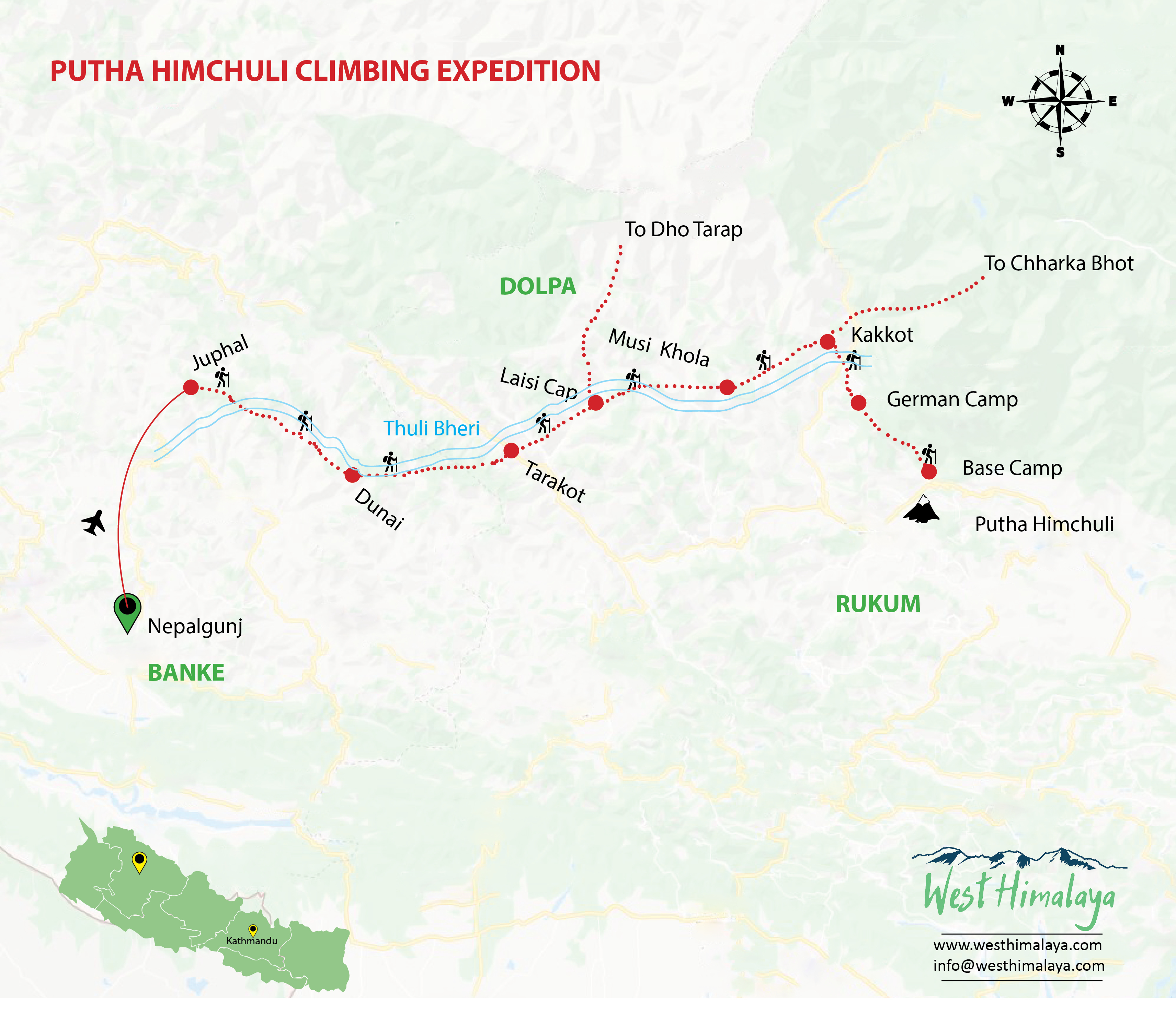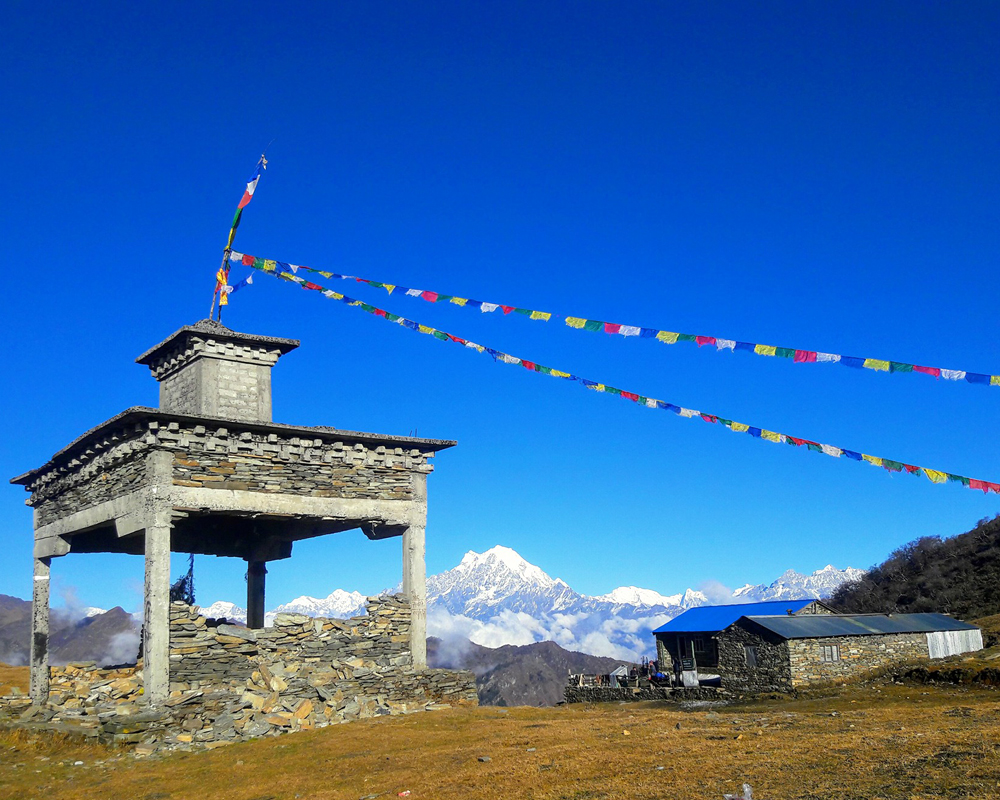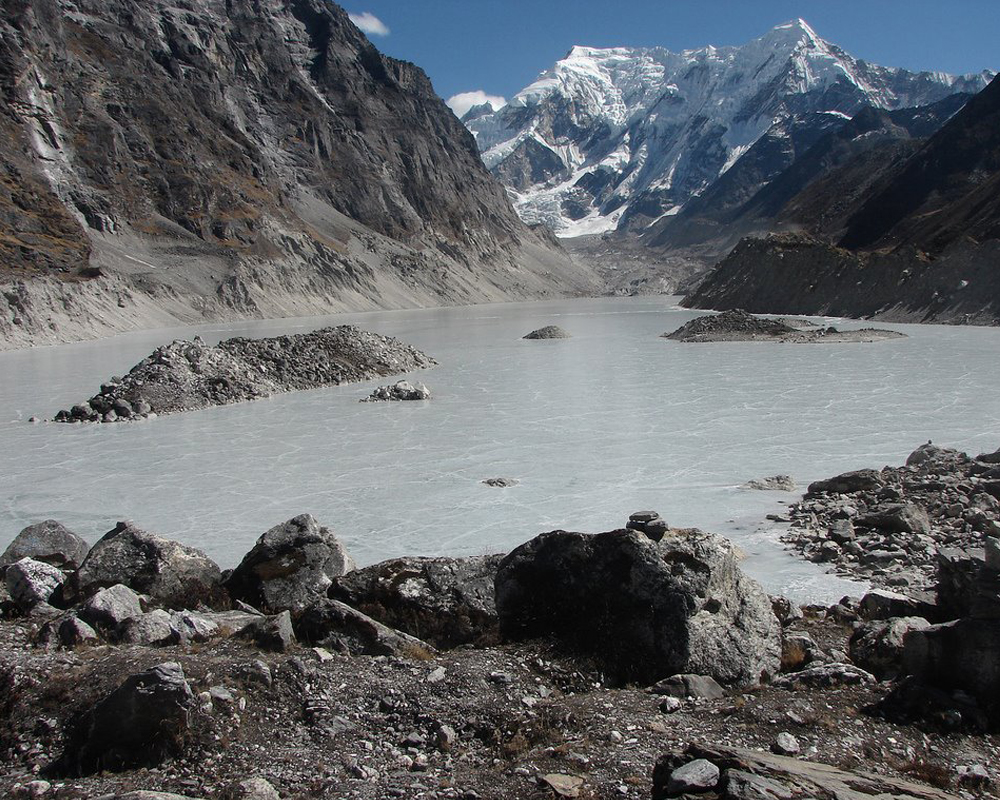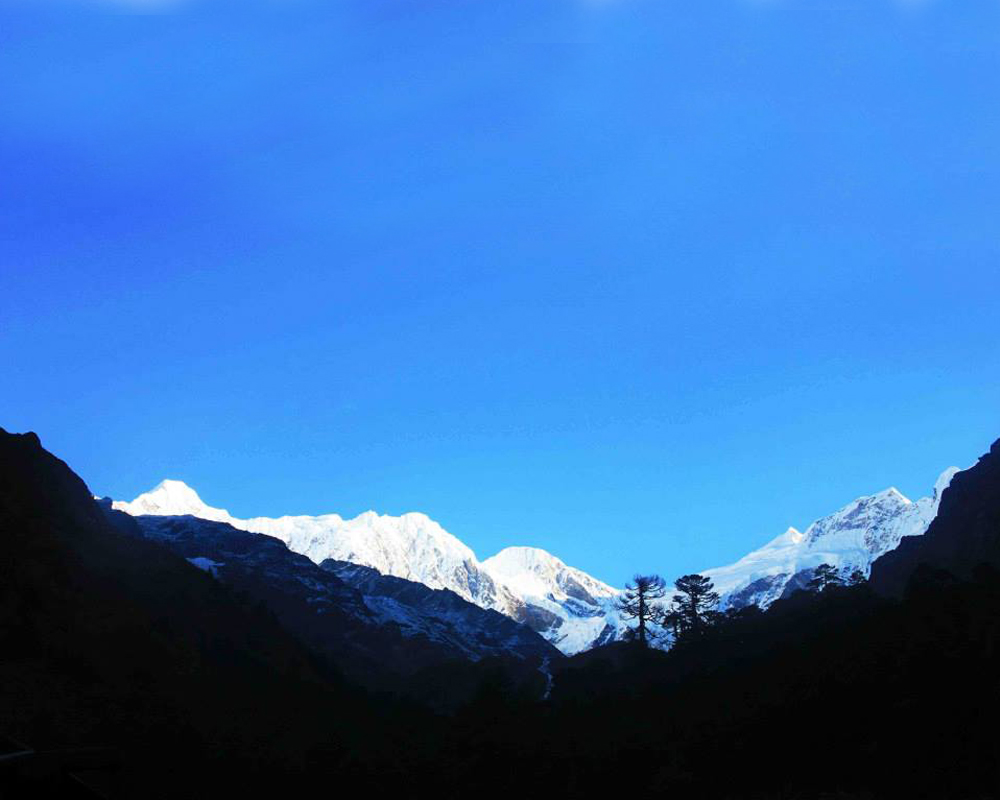- Climbing
- Putha Himchuli
Putha Himchuli Peak Climbing

Trip Highlights
-
Guided expedition to the summit of Putha Himchuli
-
Amazing trek into the least-explored countryside of south-eastern Dolpa
-
An opportunity to take a peek into the culture, tradition and lifestyle of the locals
-
Watch yak and goat caravans bringing daily essentials
-
Scores of ancient Bon and Buddhist monasteries
-
Watch locals harvest prized medicinal herbs including Yarsagumba
-
Pass through villages of Dunai, Lingdo and Kagkot
-
Walk along Bheri River that flows from the mystic Upper Dolpa

Overview
Trip Itinerary
Arrival in Kathmandu (1340m)
Welcome to Nepal! You will see our representative right outside the arrival terminal with a placard bearing your name. He will extend you traditional Nepali welcome and transfer you to your hotel and also help in hotel check-in. Remaining time is free for independent activities. In the evening, meet your guide and attend the briefing session at your hotel lobby.
O/N: HotelSightseeing and Climbing Preparations
Enjoy sightseeing of different heritages sites of Kathmandu Valley as we complete permits and other documentations for your expedition. Drive to Swoyambhunath Stupa in the morning, followed by a trip to Kathmandu Durbar Square and Pashupatinath Temple. All three sites are UNESCO World Heritage sites.
O/N: HotelFly to Nepalgunj
Today, you will take a flight to Nepalgunj. The flight takes around an hour and offers you bird’s eye view of the beautiful topography of Nepal from the comfort of your aircraft seat. Upon arrival at Nepalgunj, our guide will transfer you to your hotel. Remaining time is free for independent activities. In the evening, you can step out in the hotel neighborhood for some fresh air. Sightseeing can be arranged on request.
O/N: HotelFly to Juphal (2475m) and trek to Dunai (2140m) – 45 minutes flight, 4 hrs trek
After a good night sleep, you will take a morning flight to Juphal airstrip – the gatway to the Dolpo region today. Our representative will transfer you to the airport for a 45-minute flight to Juphal. The flight offers you breathtaking view of diverse landscape and snow-capped mountains to the north. The airport is located in a settlement high above Thuli Bheri River. You will meet your crew at the airport itself. After your loads are arrange start descending toward Dunai – the administrative center of Dopla district and the main trading center for the Dolpo region.
O/N: TeahouseTrek to Tarakot (2850m) – Approx 5-6 hrs
The trek to the base camp begins in earnest today. After breakfast, leave Dunai on a well-trodden trail on the right bank of Thuli Bheri River. The walk is easy as the trail is mostly along the river bank. A walk of about 5-6 hours will take you to Tarakot. Tarakot is a cluster of rural settlements nestled around the confluence of a small rivulet and Thuli Bheri River. This settlement was originally built as a Dzong, or fortress, by the rulers of yesteryears. There are good camping grounds in Tarakot. Our crew will start setting up our camp as soon as we reach our camping ground.
O/N: TentTrek to Musikhola (2875m) – Approx 5-6 hrs
After breakfast, resume your walk toward Musikhola. Like yesterday, follow the trail on the right side of the river. A walk of around three hours will take you to the settlement of Kolagaon. Continue walking further until you reach Lasicap (2772m) which sits near the confluence of Thulo Bheri with Tarap River coming from Dho Tarap. From here, you can walk the higher trail alogn the village of Tachingaon or stick to the same trail on the riverbank. Your camp at Musi Khola is located near the confluence of Musi Khola with Thuli River which you have been following for the past three days.
O/N: TentTrek to Kakkot (3250m) – Approx 5-6 hrs
Continue walking on the trail along the river. But you will have to cross the river couple of times to avoid a section damaged by landslide. You will walk on the left side of the river until you reach Kakkot. This is perhaps the narrowest section of the river that you have seen so far. The trail first climbs to a cliff and then descends to Kakkot via neatly carved out steps on the rocky surface. Kakkot is a small settlement on the banks of Thuli Bheri River. This will be your last day’s walk on the main trail to Chharkha Bhot from where the Thuli Bheri river originates.
O/N: TentTrek to German camp (4400m) – Approx 7 hrs
The walk will be difficult today as it is steep and the trails are unmarked and narrow. You will gain some 1,200 meters in altitude today. From Kakot, leave the main trail and follow the rising trail toward the base camp. You will have to climb multiple high passes to reach the German camp which was used as the base camp to Putha Himchuli by a German climbing party. The first pass is 4,160 meters high, while the second, just before German camp, is 4,400 meters tall. After crossing the second pass, it’s a short walk to the German camp where your camp will be set up
O/N: TentTrek to Base Camp (4915m) – Approx 5 hrs
Start walking after having breakfast at your camp. The trail to the Putha Himchuli Base Camp goes above the second pass that your crossed yesterday. It’s a steep climb as you will be gaining around 500 meters in altitude today. Some climbers say the trek to the base camp of Putha Himchuli is more difficult than climbing the peak. The difficult walk in this section will make you believe how true they were. The crew will set up your camp upon arrival at the base camp.
O/N: TentPreparation and Summit
Over the next two weeks, your crew will set up camps toward the summit. You will make multiple trips up and down the camps to prepare and acclimatize yourself for the final assault of Putha Himchuli. The summit day will depend on your fitness level and weather conditions, among others. The summit offers you breathtaking view of the Doplo region as well as other surrounding smaller peaks. After the summit, come down to the base camp.
O/N: TentTrek to German camp
Fresh after the successful summit, make a relaxed descent to the German camp. The trail is the same that you used two weeks ago climb to the base camp. Coming down, take some time to enjoy the view around. As the distance is short, it will be an easy walk for you.
O/N: TentTrek to Kakkot
The trail to Kakkot is the same that you used couple of weeks ago. It is difficult until you cross the high pass. After that it’s an easy descent to Kakkot. Your camp will be set up near the riverbank.
O/N: TentTrek to Dunai
It is going to be a long day today. You will walk on the same trail along the Thuli River River as you head toward Dunai. The trail passes through Musi Khola and Tarakot where you will stop for lunch. After lunch, continue walking toward Dunai. It’s a long yet, pleasing walk to cap your trek. In the evening, celebrate your success with the climbing crew.
O/N: TeahouseTrek to Juphal
The last walking day of your trek. After a leisurely breakfast, you can explore the marketplace of Dunai which sits on the bank of Thuli Bheri River and start the trek to Juphal after lunch. Or you can start right after breakfast and reach Juphal by lunchtime. The trek to Juphal is easy as you will walk on the broad trail. After crossing the river, the trail climbs up through terraced fields, beautiful settlements and lush forest to Juphal.
O/N: TeahouseFly to Nepalgunj, and further to Kathmandu
Take an early morning flight to Nepalgunj. Flights to and from airfields in mountain areas are generally operated in morning time as strong winds make it difficult for aircraft to take off and land as the day progresses. After you land at Nepalgunj, step out of the airport for lunch and return to the airport for your flight to Kathmandu. If the flight to Kathmandu is rather early, you can take lunch in Kathmandu itself.
O/N: HotelLeisure Day in Kathmandu
It’s a leisure day in Kathmandu. You can just stay in your hotel room to unwind yourselves after nearly three weeks in the Himalayas or go shopping to buy souvenirs for friends and family back home. We can arrange sightseeing and other activities on request. In the evening, we will organize a farewell dinner at a restaurant serving typical Nepali food to celebrate your success. You can discuss the trip and share your experiences or plan for your next trip while enjoying the meal.
O/N: HotelDeparture
After a leisurely breakfast, our representative will escort you the airport for your return flight. Our representative will ensure that you reach the airport at least three hours before your flight time so that you don’t have to rush through customs and immigration formalities. Goodbye until we meet again.
O/N: TentNeed Assistance?
If you want to customize your trips, need any logistics or permits for filming, guidance for climbing and rafting then feel free to contact us directly and start planning your trip to Nepal.
Bhoj Raj Bhat
+977 9851087675This email address is being protected from spambots. You need JavaScript enabled to view it.
Bishnu Bhattarai
+977 9851230792This email address is being protected from spambots. You need JavaScript enabled to view it.
Book this tour
Equipment List
-
Alpine Climbing HarnessIt should be simply designed, light and easy to carry with positively foolproof features.
-
CramponsIt should be fitted with boots perfectly, still crampons with anti-balling and safely into ice.
-
Ice AxeUsed to cut off the ice during climbing should be versatile light.
-
AscenderAlso known as Jamar, used for ascending on a rope, should be flexible to use with gloves or mittens.
-
Head LampMulti LED headlamp with spare batteries is essential.
-
CarabinersA minimum of two locking carabiners (large and small) and 4 regular carabiners.
-
Rappel DeviceFigure eight, ATC device or similar.
-
Ski PolesVery handy for the approach; adjustable types are the best and are recommended type.
-
SlingsOne 3m/10ft and three 2m/6ft
-
Altimeter Watch
-
Climbing HelmetsShould be light and comfortable.
Clothing
Upper Body
-
Warm sleeved T-shirts
-
Fleece pullover.
-
Fleece jacket.
-
Waterproof and breathable jacket with a large hood to accommodate climbing helmet.
-
Lightweight down jacket for chilly days in base camp or warm layer when stopping for short breaks.
-
Warm goose-down (duvet) jacket with hood or a down/duvet suit if you prefer, for high altitude use.
Lower Body:
-
Briefs
-
Walking shorts for trek
-
Walking trousers for trek
-
Two pair of thermal bottoms
-
One pair of 200 thermal bottoms
-
A pair of fleece trousers
-
A pair of waterproof/breathable trousers with full side zips
-
A pair of Goose-down (duvet) trousers or bibs.
Hands
-
A pair of lightweight poly-liner gloves.
-
A pair of mittens.
Heads
-
Warm wool or synthetic hat that covers your ears
-
Balaclava
-
Scarf or neck sleeve
-
Face mask
-
Ballcap or brimmed sun cap
-
Sunglass with side shields
-
Ski goggles
-
Bandana or headscarf
Sleeping Gears
-
One down (duvet) sleeping bag (rated to –35 C). In the high camp, you can sleep in your down (duvet) clothing inside your sleeping bag;
-
For base camp, one additional sleeping bag (good to -20 C).
-
Three closed cell foam mats for use in base camp and high altitude. We do not recommend inflatable mats due to a high probability of accidental puncture.
Feet
-
A pair of good quality plastic shells with inner boots.
-
A pair of sturdy leather or synthetic hiking boots with good ankle support for the walk to advanced base camp
-
A pair of cross-trainers, running shoes and/or sandals
-
Two pairs of med-heavy poly or woolen socks.
-
Two pairs of polypropylene or woolen sock liners.
-
Vapor barrier liner socks or plastic bread-bags
-
Two pairs of lightweight trekking socks, poly or wool
-
Two pair of cotton sock
Travel Gears
-
One Medium Rucksack (50-70 liters/3000-4500 cubic inches)
-
Two large (120 liters/7500 cubic inches) duffle kit bags for clothing and equipment.
-
Small padlocks for duffel kit bags.








